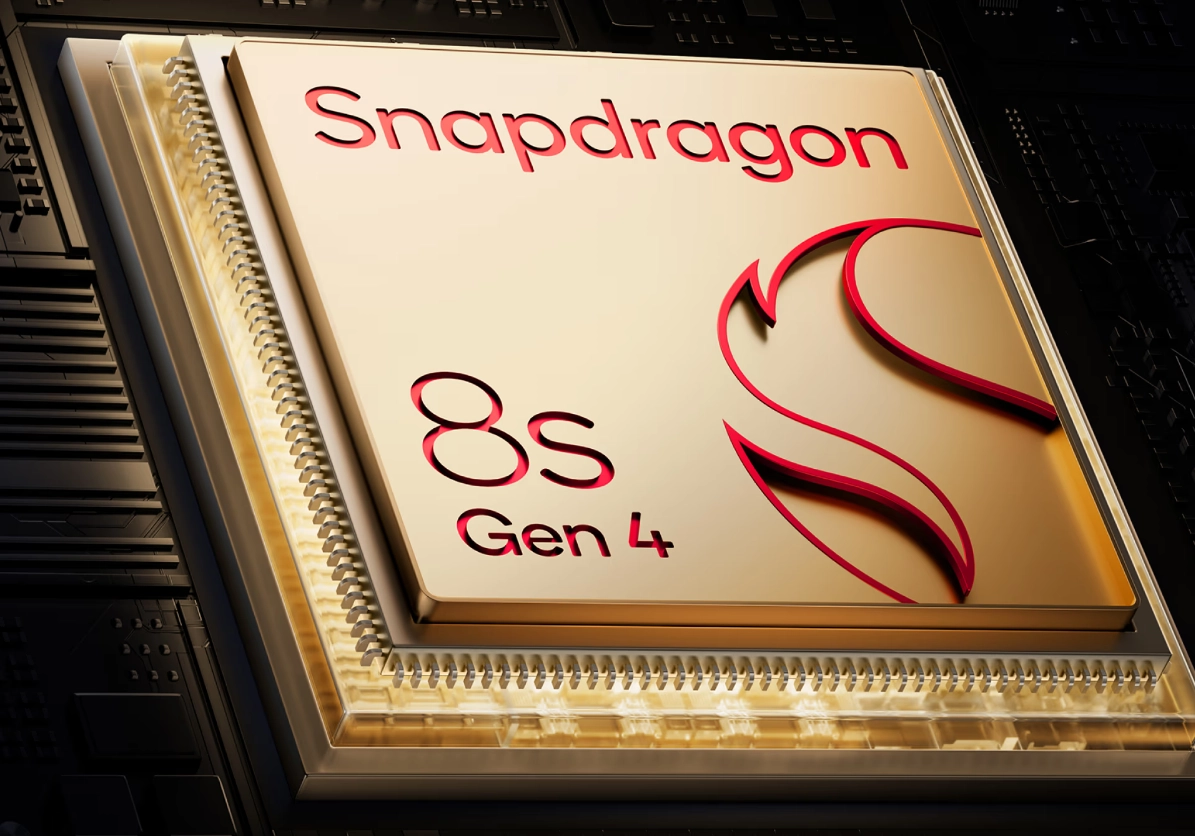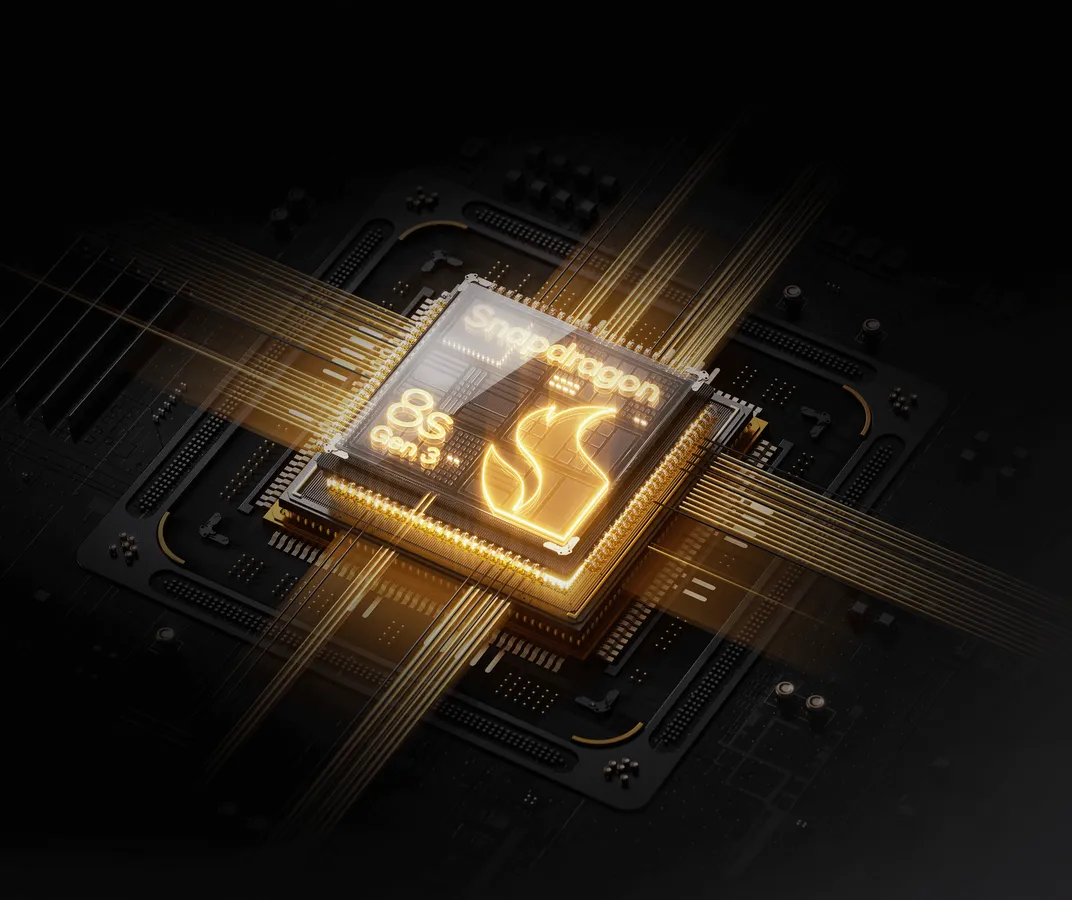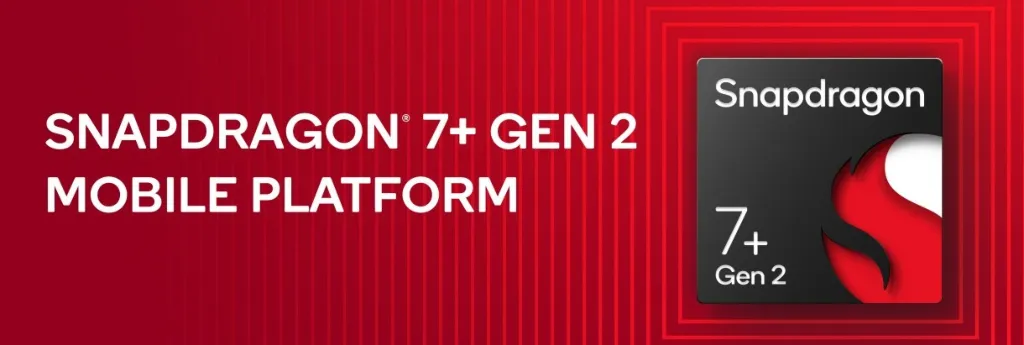10 Best Snapdragon Processors (SoC) of 2025
Qualcomm is a chipset maker whose products are used in many devices such as smartphones, tablets, and laptops. The company produces many types of chipsets under the Snapdragon name. These include high-end, mid-range, and entry-level chipsets.
For entry-level phones, there are Snapdragon 600 series, Snapdragon 6 Gen series, and Snapdragon 4 Gen series. In the mid-range, we have the Snapdragon 7 Gen series. For flagship or premium phones, there is the Snapdragon 8 series.
So, what are the best Snapdragon chipsets available today? Let’s find out in this list!
1. Snapdragon 8 Elite Gen 5

When the Snapdragon 8 Elite was released in 2024, many people thought the next version would be called Snapdragon 8 Elite Gen 2. But in September 2025, Qualcomm released it with the name Snapdragon 8 Elite Gen 5.
This name still makes sense. The word “Elite” is used because the chipset uses an Oryon CPU. “Gen 5” shows that it belongs to the Snapdragon 8 Gen 5 family. Qualcomm is also known for changing names when needed.
The Snapdragon 8 Elite Gen 5 uses a very efficient 3nm manufacturing process. This chip gives fast performance and also saves battery. It is made to improve the way people use their devices, from gaming to daily tasks.
The Oryon CPU inside this chip is very fast. It uses two high-performance cores and six energy-saving cores. The two powerful cores can reach speeds up to 4.6 GHz, which is good for heavy tasks.
The six other cores work at 3.62 GHz. These help the phone run smoothly and use less power. The chip also has an Adreno 840 GPU, which gives great graphics. It makes games and animations look smooth like a gaming console.
The real power of this chip is in the new Hexagon NPU (Neural Processing Unit). Since this is the AI era, the NPU is one of the most important parts.
This NPU is 37% faster than the one in the previous version. It supports “agentic AI” features. This means your phone can learn your habits, conversations, and preferences to help you with daily tasks.
All of this AI work happens inside the device. So, your personal data stays safe and is not sent to the cloud. The NPU also works with the image processor to make your photos and videos look better. It can change the color or lighting automatically, so your pictures look more professional.
2. Snapdragon 8 Elite

Snapdragon 8 Elite is the next version of Snapdragon 8 Gen 3. It brings better performance and new features for a smoother smartphone experience. One of the biggest changes is the use of TSMC's 3nm process, which helps save power and improve performance.
The Snapdragon 8 Elite uses an Oryon CPU, which makes it very fast and responsive. It also offers better support for artificial intelligence (AI). Because of this, many phones with this chip highlight their AI features.
The Oryon CPU is also the reason why Qualcomm changed the name of this chip. At first, people thought it would be called Snapdragon 8 Gen 4. But Qualcomm chose the name Snapdragon 8 Elite, because it uses the same Oryon architecture as Snapdragon X Elite for laptops.
Snapdragon 8 Elite has six high-performance cores that run up to 3.53 GHz. It does not include efficiency cores. Qualcomm made this decision after studying how modern apps work. They found that more performance cores give better results.
This chip also has a new Adreno GPU that improves graphics performance by up to 20% compared to the previous generation. It can handle heavy games smoothly even at the highest settings.
How powerful is it? In benchmark tests, Snapdragon 8 Elite got a very high AnTuTu score of 3,025,991 points. This score is higher than the Apple A18 Pro used in the iPhone 16 Pro Max.
On Geekbench, the chip also did very well. It scored 3,260 for single-core and 10,051 for multi-core. These scores are almost 50% higher than Snapdragon 8 Gen 3.
3. Snapdragon 8 Gen 3

Snapdragon 8 Gen 3 is made with a 4nm process by TSMC. Qualcomm released it in October 2023. It has eight CPU cores, but the layout is different. The formation is 1+5+2.
There is one powerful Cortex X4 core (3.3 GHz), five Cortex A720 cores for performance (three at 3.15 GHz and two at 2.96 GHz), and two Cortex A520 cores for efficiency (2.27 GHz). The number of efficiency cores is lower, while the performance cores are more. Does this make the chip use more power?
Actually, no. Qualcomm says that this CPU uses 20% less power than Snapdragon 8 Gen 2. The same is true for the GPU and the NPU (AI processor).
The Adreno 750 GPU (770 MHz, 2 cores) is 25% faster and uses 25% less power than the older Adreno 740. The new Hexagon NPU is 98% faster and 40% more efficient than the older version.
Snapdragon 8 Gen 3 also supports ray tracing, which makes game graphics more realistic. It supports AVI video playback with hardware acceleration. This SoC can also connect to WiFi 7 and works with LPDDR5x RAM and UFS 4.0 storage.
4. Snapdragon 8s Gen 4

Snapdragon 8s Gen 4 is often called a "flagship killer" because it gives high-end performance at a lower price. It is built with 4nm technology and does not use any small cores at all.
The CPU setup includes one Cortex-X4 core at 3.2 GHz and seven Cortex-A720 cores with different speeds. In total, it has eight performance cores. This design focuses fully on performance, even though its top speed is a little lower than Snapdragon 8 Gen 3.
In Geekbench 6 multi-core tests, the Snapdragon 8s Gen 4 scored only about 7–8% lower than Snapdragon 8 Gen 3. In the AnTuTu v10 test, it reached around 2.05 million points. These results show that Snapdragon 8s Gen 4 can deliver performance close to 2024 flagship phones at a more affordable cost.
The GPU is Adreno 825 with a two-core design. This is slightly below the Adreno 830 in Snapdragon 8 Elite, which has three cores. The graphics performance is still strong, but it's about 30% lower than the Snapdragon 8 Gen 3 in its best performance.
Even so, there is one benefit. Because the CPU and GPU speeds are a bit lower, the chip stays cooler and more stable. This makes it better for long gaming sessions since it keeps good performance without overheating or slowing down too much.
5. Snapdragon 8 Gen 2

It's a bit hard to decide whether the Snapdragon 8 Gen 2 is better than the Snapdragon 8s Gen 3 or not. Both have strong points in different areas.
The Snapdragon 8 Gen 2 has one main Cortex X3 core running at 3.2 GHz. It also includes two types of high-performance cores, two Cortex A715 cores and two Cortex A710 cores, both at 2.8 GHz.
For power saving, it has three Cortex A510 cores running at 2.0 GHz. The GPU runs at 680 MHz and helps with graphics tasks like gaming and video playback.
Snapdragon 8 Gen 2 brings new features. One of them is horizon leveling stabilization. This feature keeps videos steady even if the phone tilts quickly to the left or right. This chip also helped bring ray tracing to mobile games, along with its competitor, the Dimensity 9200.
Not only that, Qualcomm also launched the Snapdragon 8 Gen 2 Leading Version. This version is a small upgrade from the regular Snapdragon 8 Gen 2. The upgrade includes a faster Cortex X3 core, going from 3.2 GHz to 3.36 GHz. The GPU speed also increased from 680 MHz to 719 MHz in this version.
6. Snapdragon 8s Gen 3

Snapdragon 8s Gen 3 is made for phones that need a good mix of performance, power efficiency, and price. The “s” in the name means it is similar to the Snapdragon 8 Gen 3 but with a lower CPU setup.
Its CPU has one Cortex-X4 core (3.0 GHz), four Cortex-A720 cores (2.8 GHz), and three Cortex-A520 cores (2.0 GHz). This is different from the Snapdragon 8 Gen 3, which has one Cortex-X4 (3.3 GHz), five Cortex-A720 (3.2 or 3.0 GHz), and two Cortex-A520 (2.3 GHz).
Because it has one less performance core and lower clock speeds, the Snapdragon 8s Gen 3 uses less power. This helps with battery life, although it may not handle multitasking or heavy apps as well. The total power draw is also lower (6W compared to 6.3W).
The graphics use an Adreno 735 GPU. It supports features like hardware ray tracing and Snapdragon Elite Gaming. However, it is about 40–50% weaker than the Adreno 750 in the Snapdragon 8 Gen 3.
The Hexagon NPU for AI is about the same in both chips. It supports AI models with up to 10 billion parameters. But the 8s Gen 3 does not support some camera features like Night Vision Video Capture or Video Object Eraser. These features are only available on the Snapdragon 8 Gen 3.
For photography, the Snapdragon 8s Gen 3 supports cameras up to 200 MP and can record 4K HDR video at 60 frames per second. For network connection, it uses the X70 modem with a top download speed of 5 Gbps.
In benchmark tests, the Snapdragon 8s Gen 3 scored about 1.5 million on AnTuTu, which is much lower than the 2.05 million score of the Snapdragon 8 Gen 3. On Geekbench 6, it scored 1,638 for single-core and 3,991 for multi-core, compared to 2,192 and 7,085 for the 8 Gen 3.
7. Snapdragon 7+ Gen 3

Snapdragon 7+ Gen 3 is made for people who want strong performance for daily use and light gaming, but at a lower cost than the Snapdragon 8 series. This chipset also uses less power.
The Snapdragon 7+ Gen 3 is built using 4nm technology and has eight CPU cores. There is one Cortex-X4 main core at 2.8 GHz, four Cortex-A720 cores at 2.6 GHz for performance, and three Cortex-A520 cores at 1.9 GHz for efficiency.
For graphics, it uses the Adreno 732 GPU, which runs up to 950 MHz. This GPU also includes features like Snapdragon Elite Gaming Post Processing and Adreno Frame Motion Engine 2 to improve game visuals.
The Snapdragon 7+ Gen 3 supports LPDDR5x RAM with speeds up to 64 Gbit/s and UFS 4.0 for fast internal storage. For multimedia, the chip has an 8-bit Qualcomm ISP that can support displays up to QHD+ (3840 x 2160 pixels) with a 120 Hz refresh rate. It also supports cameras up to 200 MP and can record 4K video at 60 fps smoothly.
In terms of connectivity, it has a Snapdragon X63 5G modem that allows download speeds up to 5,000 Mbps and upload speeds up to 3,500 Mbps. It also supports WiFi 7 and Bluetooth 5.4 for fast and stable connections.
In benchmark tests, this chip performed well. It scored 1,366,982 on AnTuTu v10. On Geekbench 6, it scored 1,913 for single-core and 5,098 for multi-core. These results show that it is one of the strongest processors in the mid-range category.
8. Snapdragon 8+ Gen 1

Snapdragon 8+ Gen 1 was released in mid-2022 as a better version of the Snapdragon 8 Gen 1. Qualcomm moved the chip production from Samsung to TSMC’s 4nm process. This change helped improve power efficiency a lot.
The CPU setup is the same as 8 Gen 1: one Cortex-X2, three Cortex-A710, and four Cortex-A510 cores. However, the clock speeds are higher. The Cortex-X2 core runs at 3.2 GHz instead of 3.0 GHz, and the A710 cluster runs at 2.75 GHz. These changes increased CPU performance by about 10% and reduced power use by around 30%.
The Adreno 730 GPU also runs faster, which improves gaming performance by around 10% without causing too much heat.
The Snapdragon 8+ Gen 1 still offers strong performance. In the AnTuTu v10 benchmark, it scores around 1.3 million. On Geekbench 6, it reaches about 1,760 for single-core and 4,590 for multi-core.
Compared to the 8 Gen 1, the 8+ Gen 1 gives more stable performance. Many users feel that phones with this chip stay cooler and last longer on battery than phones with the original 8 Gen 1.
9. Snapdragon 7+ Gen 2

Qualcomm introduced Snapdragon 7+ Gen 2 in March 2023. At launch, Qualcomm said it was the most powerful chip in the Snapdragon 7 series so far. The performance increase is much higher than the older Snapdragon 7 Gen 1.
This is the first Snapdragon 7 series chip to include a Cortex-X core. It uses a 1+3+4 CPU layout, one Cortex-X2 core (2.91 GHz), three Cortex-A710 cores (2.49 GHz), and four Cortex-A510 cores (2.0 GHz).
The GPU is the Adreno 725. It is believed to be a simplified version of the GPU from the Snapdragon 8 series. It runs at 580 MHz and can reach a computing speed of up to 1,781 Gigaflops.
This chip includes features usually found in flagship chips. It uses TSMC’s 4nm process and supports LPDDR5 RAM at 3,200 MHz, UFS 3.1 storage, WiFi 6E, and Bluetooth 5.3.
For multimedia, the Snapdragon 7+ Gen 2 has a Spectra ISP with three cores. It supports cameras up to 200 MP. The Hexagon AI processor is also improved and is twice as powerful as the one in the previous version.
This chip supports 4K video recording at 60 fps. It can also connect to a 4K screen with a 60 Hz refresh rate or a 2K screen with 120 Hz.
Benchmark results show that the Snapdragon 7+ Gen 2 has made a big improvement. Its performance is close to the Snapdragon 8 series and is even better than the Snapdragon 870 and 888.
10. Snapdragon 8 Gen 1

Snapdragon 8 Gen 1 was Qualcomm's flagship chipset in 2022. At the time of its release, it brought a big improvement in technology. It was the first chipset to use ARMv9 cores (Cortex-X2, A710, A510) and was made with 4nm manufacturing technology.
Its CPU setup includes one Cortex-X2 core at 3.0 GHz, three Cortex-A710 cores at 2.5 GHz, and four Cortex-A510 cores at 1.8 GHz. It also comes with the new Adreno 730 GPU. On paper, this chip offers up to 20% better CPU and 30% better GPU performance compared to Snapdragon 888.
The benchmark scores are also quite high. In AnTuTu v9, it scored around 1 million points. In AnTuTu v10, it reached an average of 1.15 to 1.2 million points. On Geekbench 6, it scored around 1,661 for single-core and 4,002 for multi-core. In 3DMark Wild Life, the Adreno 730 GPU scored around 7,780 points at 45 frames per second.
In theory, the Snapdragon 8 Gen 1 is a very fast chip. But its main weakness is power efficiency. It was made using Samsung’s 4nm process, which is not very efficient. As a result, it often uses too much power and gets hot quickly. Many flagship phones in 2022 with this chip had overheating issues during heavy use.
For light tasks, this problem is not very noticeable. But for gaming or video editing, the Snapdragon 8 Gen 1 is not as good as the newer versions. Because of this, Qualcomm quickly released the Snapdragon 8+ Gen 1 to fix the issue.
That completes the list of the best Snapdragon chipsets this year. Qualcomm continues to improve its chipsets every year. Now, users in different price ranges can enjoy fast, efficient, and feature-packed chips that fit their needs and budgets.
